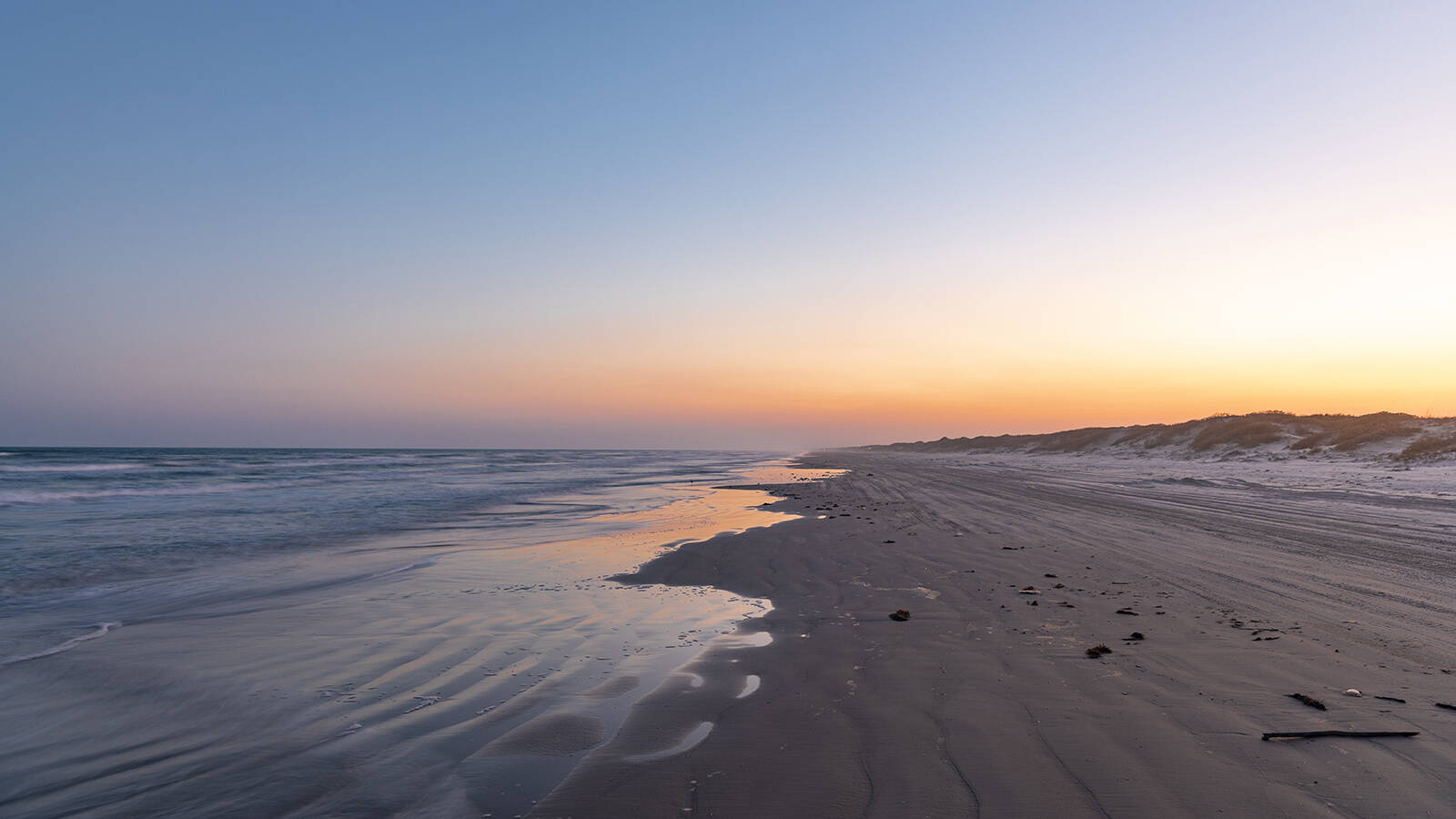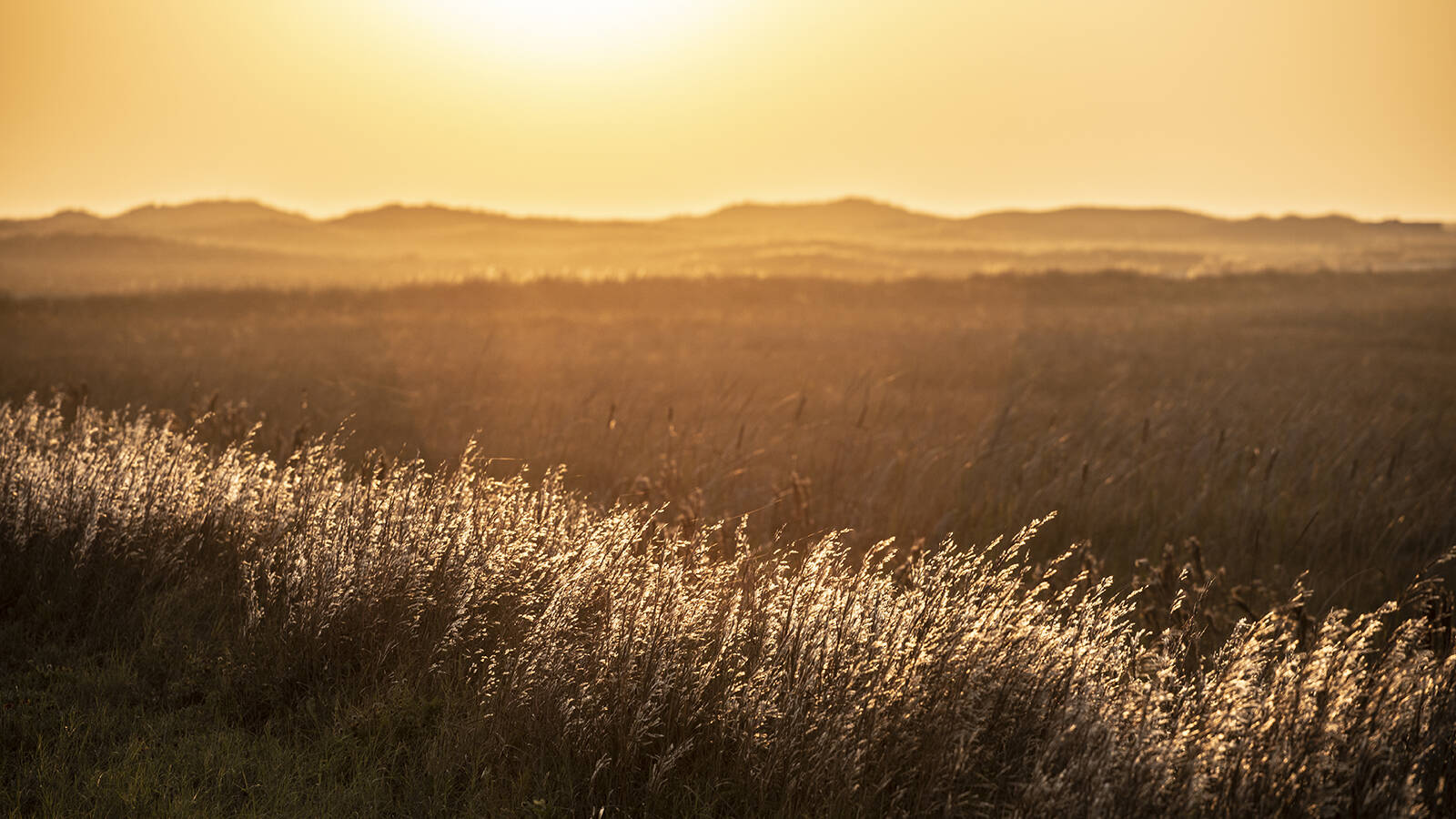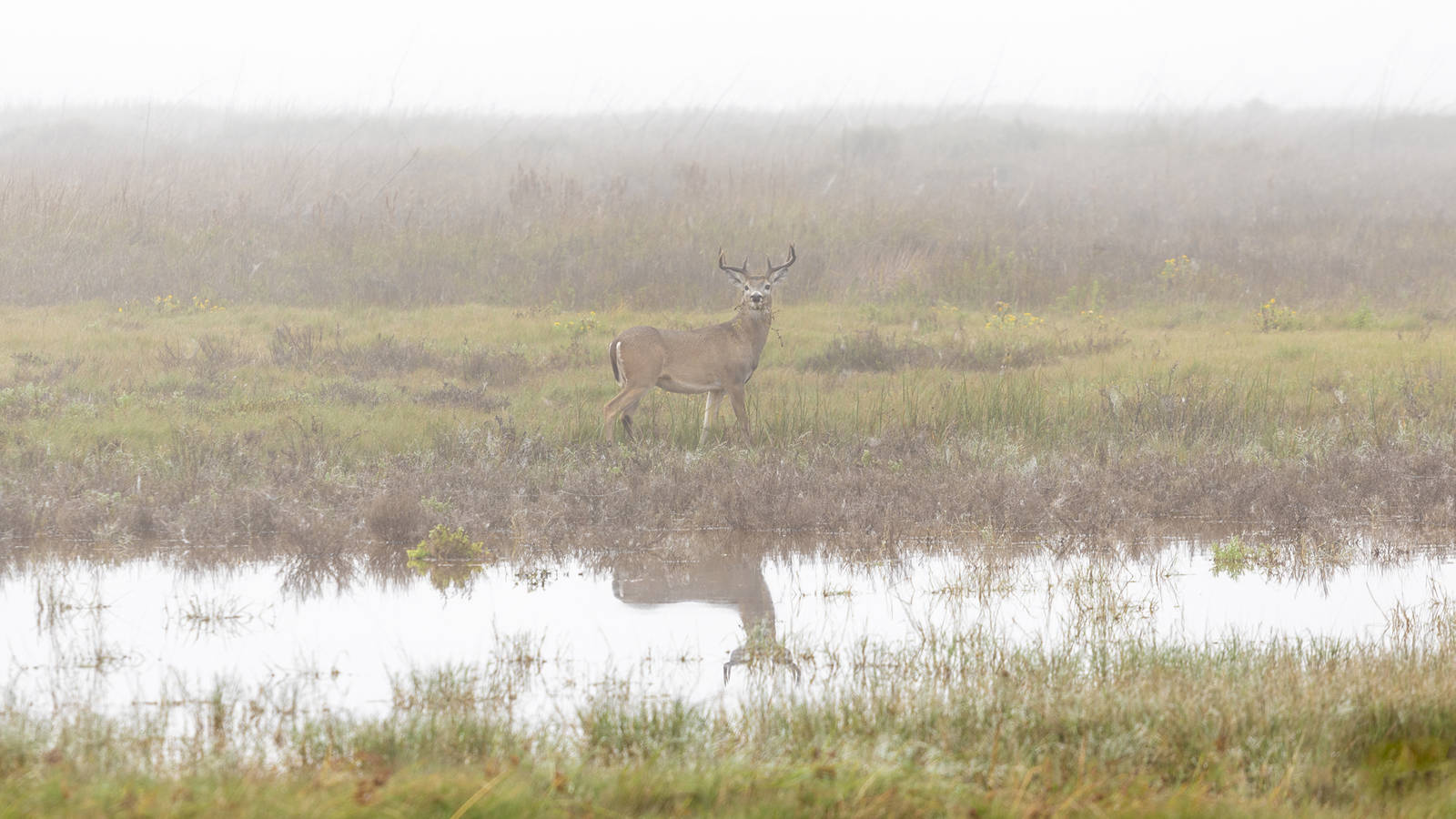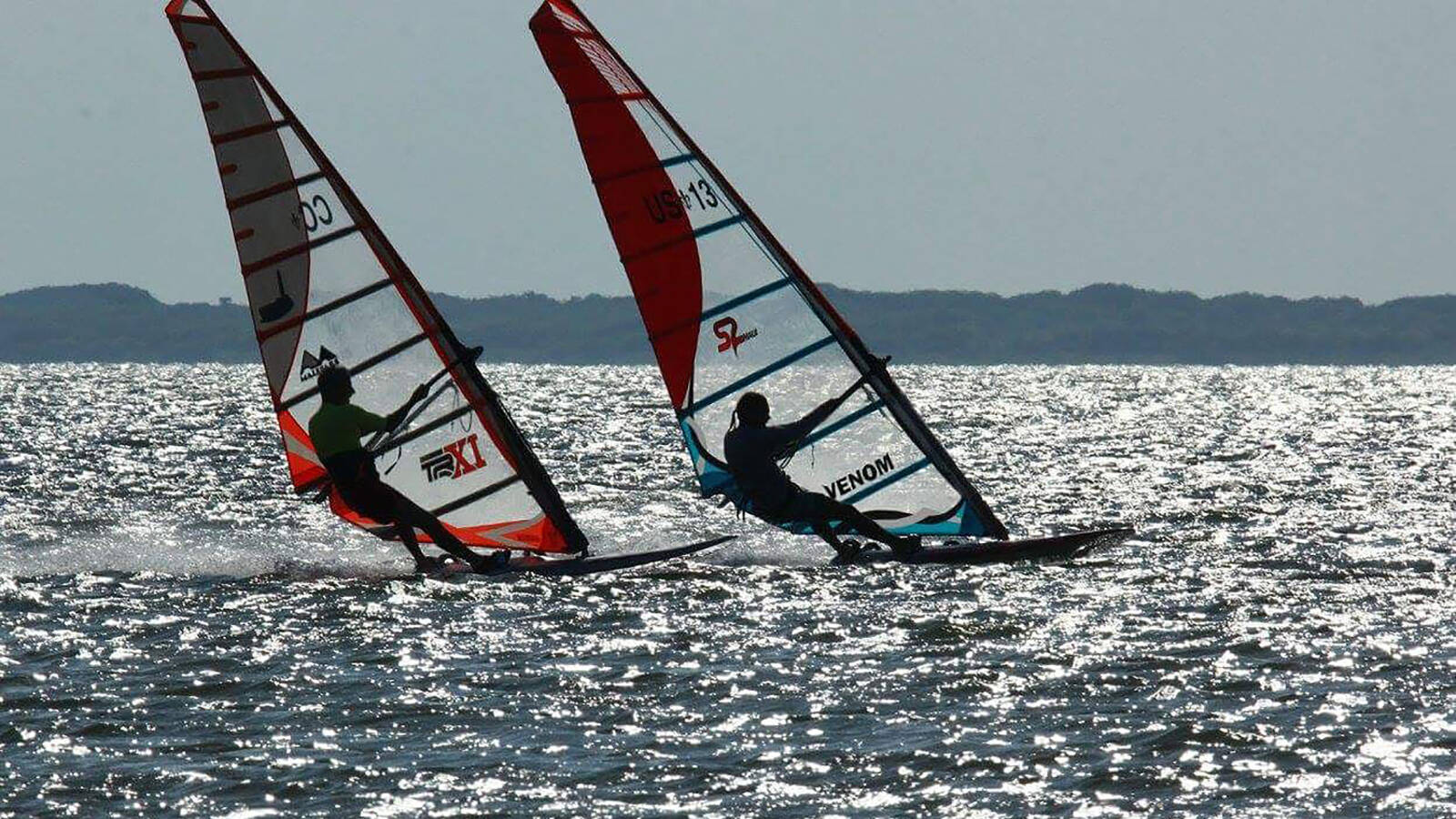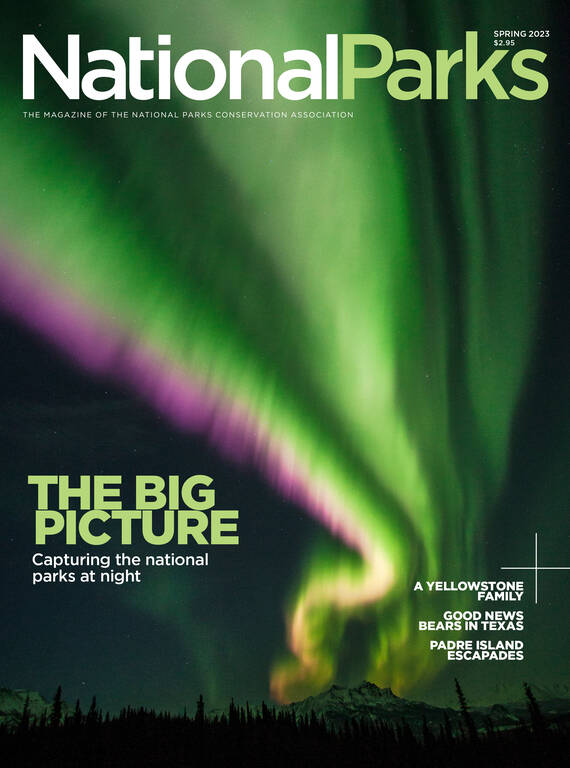Spring 2023
Into The Wind
At Padre Island National Seashore, not even a gale can ruin your trip.
One gray-skied afternoon last November, my wife, Elise, and I stood in the frigid shallows off Padre Island National Seashore, shifting our weight nervously in bootie-clad feet. Our neoprene wetsuits clung to us as though we’d been shrink-wrapped; our ungainly windsurfing boards bumped against our knees. The wind, so fierce that even the gulls struggled to make headway, kicked up whitecaps. “The water was 80 degrees two days ago,” said Olivier Jallais, our tan, well-coiffed instructor, who looked as unruffled as we felt apprehensive. “A shallow body of water cools down quickly.”
Freezing our butts off on windsurfing boards was never the plan. Elise and I had come to Padre Island National Seashore — the 66-mile-long park that protects more than half of the narrow barrier island just off Texas’s southern coast — in search of a warm respite from our home in the Colorado mountains. We’d planned to kayak 15 miles down the Laguna Madre, the shallow embayment wedged between Padre Island and the Texas mainland, to a remote spot called Yarborough Pass, where we’d set up a tent and spend a few days sunbathing and fishing. But wintry weather had followed us. The day before we’d arrived, a cold front had brought northerly winds and whipped the lagoon into froth. Kayak in this gale, and we’d probably get blown to Mexico.
PADRE ISLAND
Still, we’d driven to Bird Island Basin, the launch point for Padre Island’s lagoon-based adventures, in hopes of salvaging some fun. And, sure enough, there was fun to be had: The blustery conditions might be disastrous for kayaking, but they turned out to be ideal for windsurfing. Dozens of colorful sails skidded across the Laguna Madre at astonishing speeds, weaving around each other like race cars on a speedway. Every few seconds a sail toppled over, pitching its operator face first into the sea. The parking lot teemed with recreational vehicles, the national scope of their license plates attesting to Padre Island’s appeal.
In truth, I was hesitant, mostly because many windsurfers seemed to be on the verge of hypothermia. “It’s bloody freezing,” one English guy stammered, teeth chattering, as he stumbled from the surf. When in Rome, though, right? We solicited a lesson from Jallais, the French-born owner of a private concession called Worldwinds Windsurfing. We’d come to the right island, Jallais told us: The combination of shallow water and consistent wind made Padre Island the single best place in America to learn to windsurf. “I’m not trying to boast,” he added. “It’s really true.”
The learning curve wasn’t nearly as steep as we’d feared. As we shivered in the knee-deep surf, Jallais quickly showed us how to clamber onto our boards, haul the sail into vertical position and tilt the boom to catch the wind. Within 10 minutes, I was wobbling to my feet like a newborn fawn. A few minutes after that, I was weaving drunkenly across the Laguna Madre, the vexatious wind now an ally.
Some 4,500 years ago, as one of the origin theories goes, a barrier island rose from the Gulf of Mexico. It began as a humble shoal, a ridge of sand collected by the currents that swept along the concave Texas coastline. Wind and waves deposited more material, building the shoal into a strip of land 113 miles long and less than 3 miles wide. Between the new island and the mainland lay a lagoon that, because it had little freshwater input, grew saltier than the ocean and became one of the world’s only hypersaline lagoons. Migrating seabirds rested there; speckled trout and redfish teemed in its shallows. So productive were these waters that Spanish explorers would dub them Laguna Madre: the Mother Lagoon.
Miles of tide-washed shore and windswept grasslands make Padre Island a favorite for those searching for solitude along Texas’ Gulf Coast.
©KENNY BRAUNDeer are common at the seashore and in the broader state of Texas, where they number close to 3 million.
©KENNY BRAUNOlivier Jallais (right), the author’s windsurfing instructor, skims down the Laguna Madre, a premier destination for the sport.
©KENNY BRAUNPadre Island’s early human residents included the Coahuiltecans and Karankawas, who likely lived in circular huts, gathered prickly pear and mesquite beans, hunted animals with bows and arrows, and traveled the coast in dugout canoes. Spanish sailors, some washed ashore after shipwrecks, started to arrive in the 16th century and, beginning in 1804, established settlements and ranches. Possession of Padre Island changed hands many times, bouncing from Spain to Mexico to the Republic of Texas to the United States, which absorbed the island after the Mexican-American War concluded in 1848. Among the soldiers who deployed to Texas’ coastal plain was a young Ulysses S. Grant, who, in a letter to his fiancee, described the region as “just the kind of country that we have often spoken of in our most romantic conversations … a place where we could gallop over the prairies and start up deer and prairie birds and occasionally see droves of wild horses.”
Not everyone found the coastline romantic. In her book “Barrier to the Bays: The Islands of the Texas Coastal Bend and Their Pass,” historian Mary Jo O’Rear describes a forbidding climate that frustrated would-be conquerors. Grant’s compatriots complained about the rampant scorpions, the lack of fresh water and timber, and, most of all, the “constant wind blowing from the sea.” The gusts were so ferocious, wrote one captain during the Mexican-American War, that “you sit bold upright in your chair, feet on the rim, as if your life depended on it.”
It’s one of those places of refuge, a place for visitors who want those feelings of escape.
More than 170 years later, I can report that Padre Island remains both lovely and austere. The day before Elise and I tried our hands at windsurfing, we’d driven four hours to Padre Island from Austin — past the sprawling petrochemical plants that fringe Corpus Christi, across the causeway that connects the island to the mainland and onto the seashore’s central road. The refineries and motels vanished, replaced by rolling dunes carpeted in bluestem and sea oats, a grassy pelt that shivered and shimmered like the fur of some great mammal. The muted landscape, unadorned by trees, was shaded in every hue of beige and brown and gray. A few late-season monarch butterflies tumbled along on their way to Mexico. It was hard to argue with then-Interior Secretary Stewart Udall, who, when this land was designated a national seashore in 1962, wrote that its “great size and remote character … give Padre Island a wild spaciousness.”
Today, many people associate Padre Island with wild drinking rather than wild spaciousness. The southern end of the island — called, yes, South Padre Island — is a notorious party destination, much beloved by spring breakers and Jimmy Buffett acolytes, with a cacophonous welter of clubs and bars and T-shirt shops. Besides geographic proximity, though, South Padre has basically nothing in common with the national seashore, which protects the island’s northern half and is dominated by brown pelicans and reddish egrets rather than frat bros and vacationing oil executives. The seashore has one visitor center, two campgrounds — though primitive beach camping is also allowed along much of the coast — and 5 miles of paved road. If you want a margarita, you’ll have to bring your own tequila.
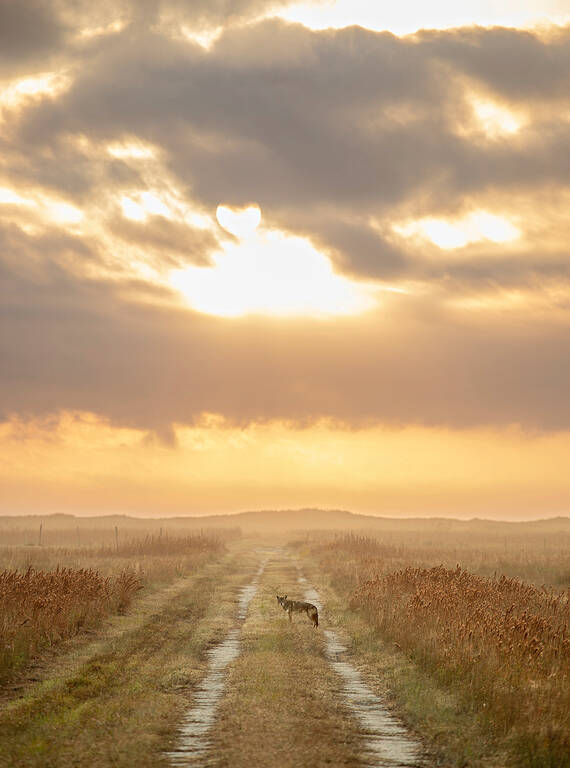
A coyote pauses during a dawn jaunt in the grasslands of Padre Island National Seashore. The Texas park site protects more than 65 miles of wild coastline along the Gulf of Mexico.
©KENNY BRAUNOur first stop was the Malaquite Campground, a site named for a band of Coahuiltecans that sits on a bluff overlooking the gulf. We pitched our tent, its fly snapping in the breeze. We were the only campers who weren’t in RVs. “Got a couple of concrete blocks over at my site,” offered the campground host, a cheerful woman with a wheezy smoker’s laugh. “Why don’t you come by and grab you a couple? As a safety precaution.”
“Do we really need them?”
“Oh yeah. Supposed to get up to 40, 50 miles per hour tonight.” She grinned mischievously. “Last night it hailed.”
We declined the blocks, choosing instead to pile our belongings into the tent as ballast, then walked the half-mile to the visitor center. There, we picked up a mesh garbage bag, emblazoned with the words “Litter Stinks,” and headed to the beach. The same wind that scours Padre Island also conveys a current of plastic, making trash pickup one of the seashore’s most curiously popular activities. We bent our heads and strolled the sand, scooping up detritus labeled in English, Japanese, Korean and a half-dozen other languages — a meditative, hypnotic scavenger hunt. Every wave seemed to disgorge more polymerized flotsam. “Is that a new water bottle?” Elise said, dismayed, as we returned along the same stretch we’d just cleaned.
That night, after we’d disposed of our garbage and eaten a cold dinner at our picnic table — leftover tacos from the roadside diner where we’d grabbed breakfast — we returned to wander the beach. We had the park to ourselves: All the RVers at Malaquite Campground seemed to be hunkered in front of the same college football game, and even the ghost crab burrows looked vacant. Sheets of windblown sand scurried back and forth, a testament to the shifting nature of this place. After we left the beach and took to the main road, we walked straight down its centerline, never once disturbed by a car. I wondered how many other parks were ever empty enough to permit such a thing.
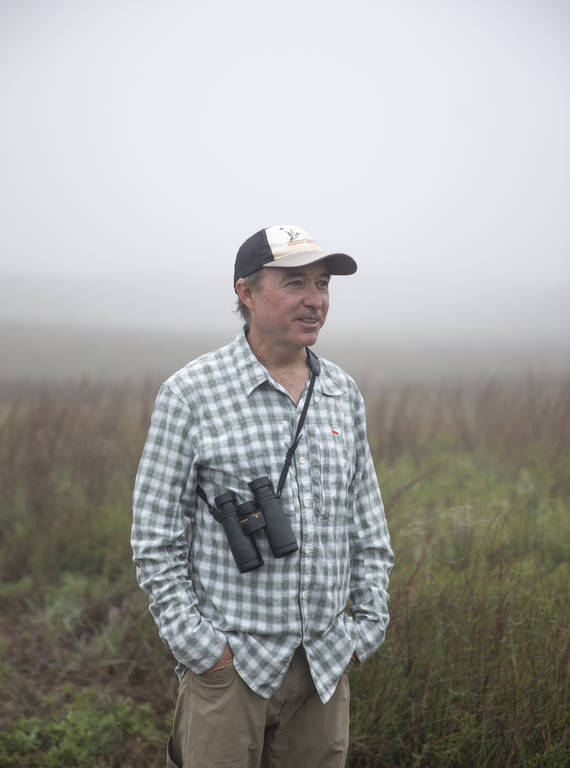
Birder and biologist David Newstead surveys Padre Island’s extensive avian populations.
©KENNY BRAUNThis, in some ways, is the beauty of Padre Island National Seashore. It’s a mostly roadless landscape, where dark skies and natural soundscapes, those rarest of resources, remain abundant. “It’s one of those places of refuge, a place for visitors who want those feelings of escape,” Sandra Ramos, Texas coastal program manager at NPCA, told me later. “That solitude is something really special.”
Not that we were alone. We saw a ghostly jackrabbit bounding across the highway, and the pale outline of a deer. At one point Elise aimed her headlamp into the dune grass and two luminous eyes — no, six; no, eight — shone back at her. Suddenly the eyes rose a foot, as if levitating, and, after a confused moment, we realized that they belonged to four raccoons standing on their hind legs to scope us out. They followed us down the road, as if expecting a handout, and then disappeared into the brush.
Padre Island National Seashore may have periods of blessed emptiness, but it was crowded in the ’70s and ’80s, and the visitation numbers have started to climb again as tourism and real estate values along the Texas coastline have boomed. In 2021, the seashore greeted 615,000 guests — roughly 100,000 more than in 2013. Like every park, Padre Island has had to grapple with a contradiction as old as the Organic Act, which created the Park Service: accommodating the public without sacrificing nature.
One morning, I hopped into a truck with David Newstead, coastal bird program director at a nonprofit called the Coastal Bend Bays and Estuaries Program, to explore that dilemma. We drove onto the beach — a practice that’s permitted along almost the entirety of the seashore’s length — and headed south. It was another moody, wind-tossed day, the sky low and leaden. Newstead, an avid surfer, surveyed the chaotic waves ruefully. “Texas surfers tend to get pretty good because they have to suffer through conditions like this,” he said.
The birds didn’t mind. Padre Island is a vital hub on the Central Flyway, an epic migration corridor that connects South America with the Canadian prairie, and for some species, extends to the Arctic. More than 380 species have been spotted here. As we drove south, a flock of Caspian terns, looking dapper in their black feathered caps, fluttered like kites. Red knots — shorebirds that Newstead has tracked migrating as far north as the Arctic and as far south as Chile — probed the sand for clams. A great blue heron stood motionless in the surf, clutching a catfish in its bill. A stout falcon called a crested caracara picked at a dead redfish.
Padre Island, Newstead explained, is a complex system, and the two bodies of water it cleaves, the Gulf of Mexico and the Laguna Madre, are tightly linked. During my visit, the birds were mostly working the beach on the gulf side. Soon, however, water levels in the lagoon would drop, uncovering tidal mudflats pocked with clams, crabs and other delicacies. “It’s incredibly productive habitat — at times you can see hundreds of thousands of birds,” Newstead said. Wading birds and seabirds also roost and nest on islands in the Laguna Madre, most formed by sediment that the Army Corps of Engineers piled up when it dredged the lagoon to create a shipping channel. Birds are the force that unites Padre Island’s diverse habitats — even its man-made ones.
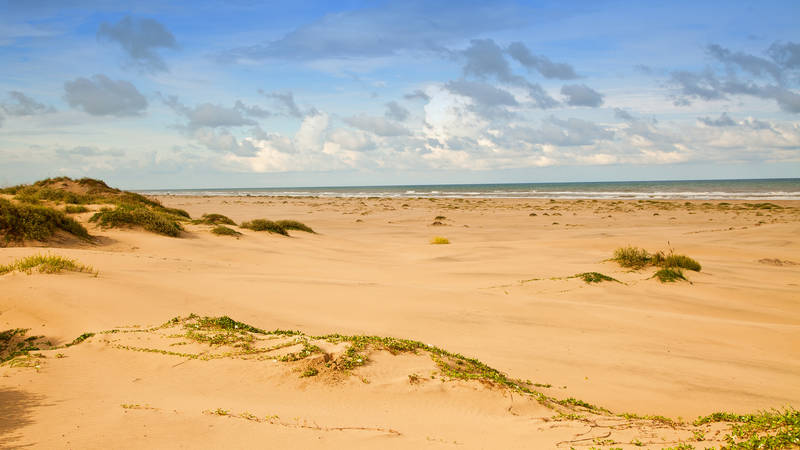
Behind the Scenes at Padre Island
Award-winning journalist Ben Goldfarb shares some of the unexpected adventures that shaped his new feature story in National Parks magazine — and how he built his career traveling to exciting…
See more ›Few people understand those connections better than Newstead, who has been tagging and tracking the island’s birds for years. In addition to his special affection for red knots, Newstead also admires the piping and black-bellied plovers that we watched skitter across the damp sand, one step ahead of the surf. Plovers have high “site fidelity,” meaning that they return to the same areas every year, and Newstead knows many individuals intimately. “That’s probably 302,” he said, nodding to one black-bellied plover. I lifted my binoculars and peered at the bird’s anklet. Sure enough: 302.
But site fidelity is also a danger. As humans — and our trucks, dogs and other accoutrements — have proliferated along the Texas coastline, we’ve driven shorebirds from many of their territories. “You get to a certain density of people, and there are no birds on the beach anymore,” Newstead said. Although the national seashore remains a stronghold compared to other nearby islands, human disturbance is still a threat. The tire scars left by off-road vehicles have damaged sensitive flats, and fishermen who get too close to islands often flush seabirds off their nests and expose eggs to the sun’s heat. Hungry gulls have even learned to follow fishermen and feast on vulnerable eggs.
Padre Island faces another, more existential challenge. No national park remains untouched by climate change; still, few units are as jeopardized as this low-lying barrier island. According to one Park Service analysis, the seashore could experience more than 2 feet of sea-level rise by 2100, increasing the risk that a major hurricane will someday drown the park beneath its storm surge. That alarming possibility has become more likely as rising ocean temperatures intensify the storms that blow through the Gulf of Mexico. “Extreme weather events are totally changing our ecosystem,” Michelle Havens, the regional coastal program coordinator for the U.S. Fish and Wildlife Service’s Southwest region, told me later. That’s especially bad news for Laguna Madre’s precious islands, which have experienced accelerated erosion rates, threatening birds with eviction. “Seeing some of the drastic changes has been pretty scary,” Havens said.
Beyond the park’s borders, Newstead and his colleagues have attempted to save vanishing islands by adding sediment or solidifying them with rock. Within the national seashore, however, that logistically challenging work hasn’t yet begun. “Sea-level rise is pushing these birds to the edge,” Newstead said as we pulled off the beach and back onto the main road. “Thinking through all the threats is pretty mind-boggling.”
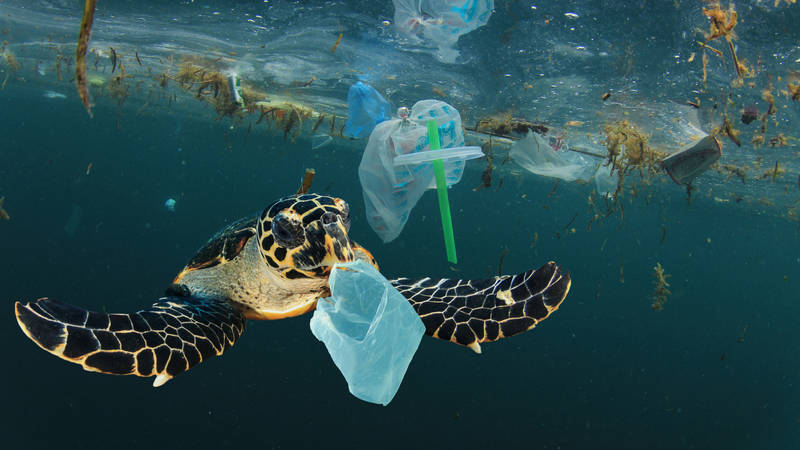
Turtle Troubles
New research from Padre Island National Seashore highlights the toll that ingesting plastic is taking on green sea turtles.
See more ›Even so, Padre Island’s ecosystem has a long history of recovering from human-imposed disaster. In the 19th century, hunters on Padre Island and beyond annihilated untold numbers of wading birds, shorebirds and waterfowl for fashion, sport and consumption; now more than three-quarters of the continent’s redheaded ducks winter on the Laguna Madre. Harvesters once slaughtered Texas’ sea turtles en masse and shipped their meat around the country and overseas; now turtles thrive around Padre Island. For more than 150 years, cattle overgrazed beach grasses, destabilized dunes and hastened erosion here. But the last cows were herded off Padre Island by 1971, and its vegetation has rebounded. This is a fragile landscape, yes, but also a resilient one.
That legacy of restoration continues today. Beginning in the early 1950s, private energy companies drilled dozens of oil and gas wells on Padre Island, an activity that was specifically permitted to continue in the national seashore’s founding legislation. For years some of these derelict wells still leaked methane, a greenhouse gas 25 times more potent than carbon dioxide. Although the last orphaned wells were plugged in 2021 with settlement funding from the Deepwater Horizon oil spill, old access roads and well pads linger on the landscape. “When a company goes bankrupt or disappears, we’re left to deal with it,” said Kelly Nesvacil, Padre Island’s natural resources program manager.
This is a fragile landscape, yes, but also a resilient one.
Fortunately, the 2021 Bipartisan Infrastructure Law, which NPCA supported, allocated $25 million to restore orphaned wells around Texas, including within Padre Island National Seashore. The funding, along with additional sources of money, will be used to address remaining roads and well pads in the park. “We’re excited to be part of that restoration process,” NPCA’s Ramos said.
That fossil fuel production is allowed within a national park surprises most visitors; certainly it appalled me. But that’s Padre Island in a nutshell: It’s a place where industry and nature have long coexisted, a place where, say, a windsurfing concession can thrive on one of the world’s most productive lagoons. “When it’s calm and the windsurfing isn’t good, there are all kinds of birds to watch,” Jallais told me after our lesson. “You see a lot of migratory birds, big flocks of ducks. There’s been an osprey around here, diving for fish.” Some parks you visit either for the wildlife or the recreation; at Padre Island, you need not choose.
Reader, I never did master windsurfing. I spent the afternoon toppling off my board, shredding my palms on a barnacle and swallowing more hypersaline lagoon water than any person should. Elise, thanks perhaps to her yoga practice or her lower center of gravity, fared better, and soon she was tacking upwind like a pro. When I challenged her to a race, she sailed a hundred yards before I got upright. That night, she would replay cellphone footage of the two of us over and over again, cackling each time at her husband’s klutziness.
ABOUT THE PHOTOGRAPHER
Despite my ineptitude, there was one moment, however brief, when everything went right — when I tilted the sail at the proper angle and suddenly caught the full power of the wind. The abrupt force nearly wrenched the boom from my hands, and the board took off as though propelled by an outboard motor. I was swept along atop it, racing across the Laguna Madre in parallel with the storm-tossed pelicans, birds and man both borne by the wind.
About the author
-
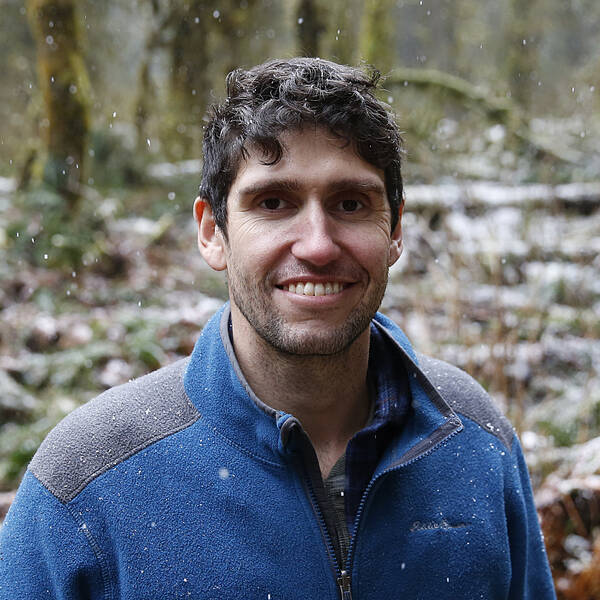 Ben Goldfarb Author
Ben Goldfarb AuthorBen Goldfarb is the author of "Crossings: How Road Ecology is Shaping the Future of Our Planet" and “Eager: The Surprising, Secret Life of Beavers and Why They Matter.”
